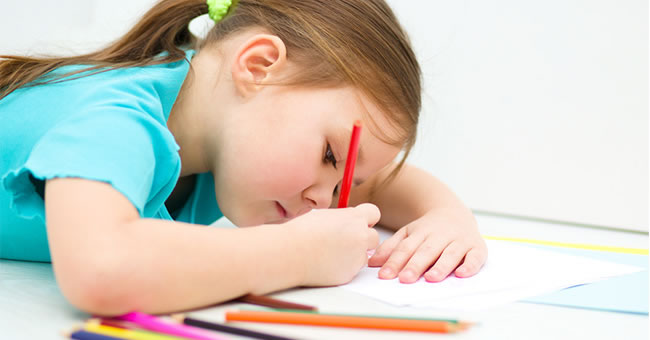
Learning centers are an important component of preschool and kindergarten classrooms, but children with Attention Deficit/Hyperactivity Disorder (ADHD) often struggle with the learning center environment. For example, a child with ADHD may have trouble focusing on the activity or staying in his or her assigned learning center space. Children with ADHD may also get into fights with other children when participating in learning center activities, and they may not know how to react to all of the activity happening around them.
Knowing how to make learning centers more inclusive for children with ADHD can be difficult, because each child's ADHD symptoms and needs vary. You may have to try several strategies before finding the right combination for each child. In The Inclusive Early Childhood Classroom, Patti Gould and Joyce Sullivan provide some easy tips for modifying learning centers to best meet the needs of young children with ADHD. To help you get started on modifying your learning centers, here are a few examples of the strategies Gould and Sullivan share for three of the most popular learning centers in preschool and kindergarten classrooms:
Art Learning Centers
- Encourage children who have organizational difficulties or get frustrated when drawing a picture freehand to use stencils. Tracing a stencil of a geometric shape or a leaf can help children with ADHD reduce their frustration.
- Active or agitated children may also benefit from lying on the floor while working on an art project. This gives children another option to sitting or standing and provides the pressure touch needed to help them calm down.
- Providing an adequate work area with well-defined boundaries can help prevent children from intruding on each other's work spaces. Two examples of providing well-defined work spaces include using cookie sheets to mark each child's work space or moving an art table against the wall to cut down on clutter and help children work with minimal distractions.
Block Learning Centers
- Choose one or two consistent rules for your block center and make sure all of the children understand and remember the rules. A good rule example is "only touch your own blocks and your own structure."
- Use rugs with non-skid backs to cut down on the noise levels of crashing blocks. You can also use individual rugs or mats that are large enough for the child's block structure to cut down on noise while creating well-defined building spaces.
- Children with ADHD may struggle to stack blocks correctly and then become frustrated when the structure wobbles or falls. Make sure you explain to the child that blocks don't always stay where you put them and that he or she can come get you when the blocks start to wobble. Offering children large building blocks to play with can also help children who struggle with stacking blocks.
Dramatic Play Learning Centers
- If a child cannot focus on the dramatic play activity and wanders aimlessly around the classroom, intervene and encourage the child to settle down and play. Try having children wear a weighted vest or squeeze a stress ball if they have problems with sensory processing.
- Reduce distractions in the dramatic play learning center by sectioning off that center from the rest of the classroom. Try hanging sheets or lengths of fabric from the ceiling or give children the option of using a large box for dramatic play.
- If children have difficulty sharing or taking turns, help them learn to verbalize what is bothering them instead of acting inappropriately. You can also help them practice sharing by giving children paper tickets to pass out during play.
Make sure all of the children in your care understand classroom and learning center rules and the consequences of inappropriate behavior. For more tips and strategies, be sure to read The Inclusive Early Childhood Classroom and our other Insights and Inspirations articles. Special needs and inclusion materials are also available to help young children with ADHD succeed in the classroom.
